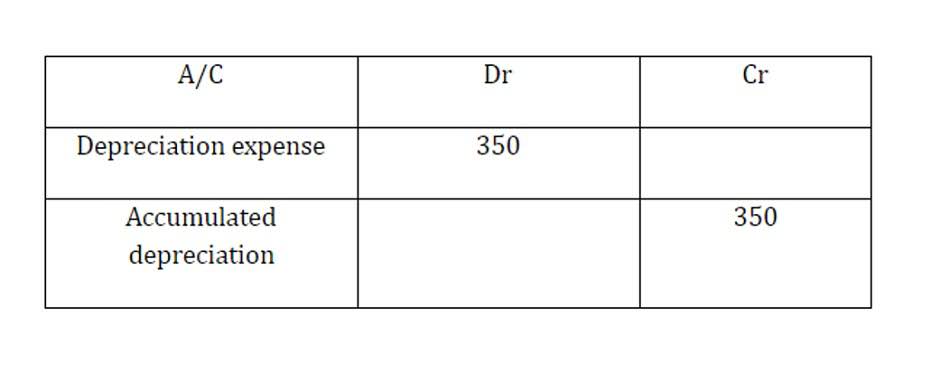
Instead, management must maintain a certain minimum level of staffing in the production area, which does not change with lower production volumes. The resulting contribution dollars can be used to cover fixed costs (such as rent), and once those are covered, any excess is considered earnings. Contribution margin (presented as a % or in absolute dollars) can be presented as the total amount, amount for each product line, amount per unit, or as a ratio or percentage of net sales. An income statement reports an organization’s sales revenue less its expenses (costs) for specified period of time. On a contribution margin income statement, costs are classified as variable or fixed. Breakeven can be computed for the whole organization or for individual segments within the organization.
Variable and Fixed Costs
As sales increase, the contribution margin will increase in conjunction with sales, while fixed expenses remain (approximately) the same. Fixed expenses will increase if there is contribution margin income statement format a step cost situation, where a block of expenses must be incurred to meet the requirements of an increase in activity levels. For example, sales may increase so much that an additional production facility must be opened, which will call for the incurrence of additional fixed costs. A contribution income statement is a crucial tool for businesses aiming to understand the relationship between their sales, variable costs, and fixed costs.

Company
In the simplest terms, the contribution margin is the amount left over after deducting variable costs from revenue. This figure reveals how much is left to cover fixed expenses and contribute to profit. Also important in CVP analysis are the computations of contribution margin per unit and contribution margin ratio. To conduct a sensitivity analysis effectively, identify the primary variables that influence contribution margin and operating income. Alter these variables incrementally within a defined range to observe the corresponding effects on financial performance.

AccountingTools

As a business owner, you’ve likely prepared a traditional income statement, with the usual line items for revenue and expenses, with net income on the bottom line. Because expenses are classified as variable or fixed, it is much easier to determine whether a product, service or even segment is profitable or not. While you are not required to prepare a contribution margin income statement, doing so is still beneficial to your business. Revenue is the total sales made by the company during the period through the sale of goods or the provision of services to the company’s customers. It is determined by multiplying the number of units sold by the per-unit cost Certified Bookkeeper of the goods sold. As such, if a business wants to decrease costs to increase profits, it would usually look into the variable costs that it can reduce.
#2. The contribution margin can be calculated by separating variable costs from total expenses.
For example, consider thedepreciation expense on the company headquarters building that isallocated to each segment of the company. The depreciation expenseis a direct cost for the company headquarters, but it is anindirect cost to each segment. If a segment of the company iseliminated, the indirect cost for depreciation assigned to thatsegment does not disappear; the cost is simply allocated among theremaining segments. In a given situation, it may be possible toidentify an indirect cost that would be eliminated if What is bookkeeping the costobject were eliminated, but this would be the exception to thegeneral rule. An indirectcost (expense) is not traceable to a given cost object buthas been allocated to it.
- A healthy contribution margin acts as a buffer against unforeseen expenses or sales dips.
- That is, it must generate a certain amount of revenue in order to cover its expenses.
- Companies present their income statement to investors to help them make various decisions.
- Sensitivity analysis, therefore, aids in understanding potential risks and empowers businesses to make proactive, informed choices that align with their financial objectives.
- Alter these variables incrementally within a defined range to observe the corresponding effects on financial performance.
Video Illustration 5-1: Overview of organizational segments LO1
- Prepare a traditional income statement and a contribution margin income statement for Alta Production.
- Segment margin represents the sales revenue of a particular segment less variable expenses and fixed expenses that are traceable to the segment.
- This figure helps in identifying the break-even point—where your revenue equals your total costs, and you’re neither losing money nor making a profit.
- Breakeven can be computed for the whole organization or for individual segments within the organization.
- Contributionto indirect expenses is defined as sales revenue less alldirect expenses of the segment (both variable direct expenses andfixed direct expenses).
- When a company is deciding on the price of selling a product, contribution margin is frequently used as a reference for analysis.
A contribution margin income statement presents present its data in a way that makes it easier to understand the effects of increases or decreases in the level of activity. Companies present their income statement to investors to help them make various decisions. However, companies also prepare some reports internally which can resemble these statements. To understand segmental analysis, you need toknow about the concepts of variable cost, fixed cost, direct cost,indirect cost, net income of a segment, and contribution toindirect expenses. Variable costs are direct and indirect expenses incurred by a business from producing and selling goods or services. These costs vary depending on the volume of units produced or services rendered.
Total Income Before Tax
- Because the direct costs of a segment are clearlyidentified with that segment, these costs are often controllable bythe segment manager.
- Keep in mind that contribution margin per sale first contributes to meeting fixed costs and then to profit.
- Unlike traditional income statements, it separates variable costs from fixed costs, allowing businesses to see how much revenue is contributing to covering fixed costs and generating profit.
- They’re also useful for managers determining how sensitive variable costs are to a change in sales or production.
- An income statement reports an organization’s sales revenue less its expenses (costs) for specified period of time.
- Whether you’re pricing your new cupcake line or deciding which fitness gear to expand, this tool provides a clear path to sustainable profitability.
This ratio evaluates the efficiency of a company’s cost structure and pricing strategy. By expressing the contribution margin as a percentage of total sales, businesses understand how much revenue is available to cover fixed expenses and generate profit. A contribution margin income statement provides a detailed view of how revenues are transformed into profits, emphasizing variable and fixed costs. It begins with sales revenue, the total income from goods or services sold. This figure sets the stage for understanding subsequent financial dynamics.

Segment margin
And finally, the gross margin is replaced in the statement by the contribution margin. The «total income before tax» line on the contribution format income statement is the difference between the contribution margin and fixed costs. Fixed costs are costs that do not change relative to the amount of production.